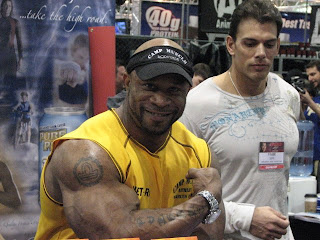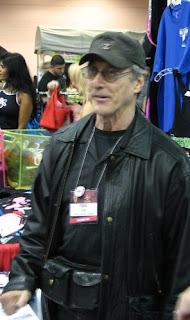 First published at Edge Philadelphia:
First published at Edge Philadelphia:
An old philosophy problem asks "What happens when an irresistible force meets an immovable object?"
Put the pair on stage and throw a woman between them and the answer is Garson Kanin’s comedy Born Yesterday, now in a very funny, if heavily caricatured production at the Walnut Street Theatre.
In Kanin’s 1946 classic, the ruthless scrap-metal magnate Harry Brock (Marco Verna) and his 100k-a-year lawyer Ed (David Hess) go to Washington. In the aftermath of WWII, Brock wants to corner the market on Europe’s scrap iron, and plans to bribe (if not outright bully) Senator Hedges (Greg Wood) to skirt the tariffs, regulations, and red tape that stand in the way.
But Brock runs headfirst into Paul Verrall (Darren Michael Hengst), an idealistic young reporter who still believes in the Constitutional underpinnings and principles of democracy even if everyone else in the nation’s capital suffers from "don’t care-ism." Initially disguising his plans in the form of a standard interview, Verrall really wants to expose the illegal activities fueling Brock’s corporation.
After the first meeting with the Senator and his wife (Susan Wilder), Brock’s idiotic chorus girl girlfriend Billie Dawn (Kate Fahrner) nearly kills the deal every time she opens her mouth, and if Brock’s going to succeed in "a town of respectable fronts," Ed suggests that he either dump her or marry her. The problem: to cover Brock’s illegal activity, the pair has bullied Billie into becoming the dummy head (literally) of most of his corporations, and he can’t give her the brush-off because "she owns more of him than he does." So the bull-headed industrialist suggests that Verrall tutors her, and in two months time, Billie’s crammed her hotel suite full of books, and traded her nasally voice for measured speech, her jazz for classical, and is thinking of trading in her irresistible capitalist for Verrall’s immovable idealism.
And in every case but Verna’s, the caricatures hit their humorous targets. Fahrner’s simply adorable, both in her initial idiocy (who wouldn’t want to keep her around) and in her later change of heart, and Wood’s wincing reactions to her blunt outbursts mark some of the first act’s funnier moments. Hess’ drunken former District Attorney ably reflects the shifting moral balance on stage and in the audience, where even Brock’s bullying and later complaints of ingratitude found laughter and sympathy.
But while Hengst find the right balance of fearfulness and sincerity that backs up every set of untested ideals, Verna’s characterization is less interesting, and too big for the rest of the performances. In a voice that’s part Vito Corleone and part every role ever played by Al Pacino, Verna screeches his way through all of the play’s moments with a booming intensity that he never modulates. Sometimes, he’s funny, but it’s the lines he delivers ("there’s only one Mrs. Brock, and she’s dead") more than his acting that scores the laughter.
Todd Edward Ivins’ utterly magnificent hotel penthouse set recalls the grandeur of a more gilded age, where lush divans and dark wood relax the eyes even as (faux) marble columns shoot up to forty-foot ceilings and abut a spectacular windowed view looking down on the Capitol Building (and nicely representing the position Brock came to Washington to attain). In line with the caricatured characterizations, Colleen Grady bedecks Brock in forceful pinstriped suits (and a gorgeous cream colored coat), dresses Verrall in more humble plaids, and when Fahrner first walks onto the set, her gorgeous hair, makeup, and dress only completes the sense of 40’s era glamour that the Walnut’s production values create.
And as for who wins the age old question? As Verrall himself puts it, "the war leaves everything the same in DC."






















































